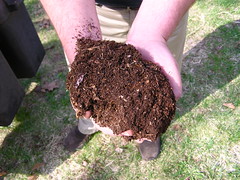Clean water should be taken more seriously

Photo credit: makelessnoiseThe other day I saw an article about big city water ratings in the United States, and it really got me thinking how sad it is that clean, fresh water is so hard to find. The article was brought to my attention at a good time, as just the other day I watched a program on the History Channel (I think) that spoke of the deterioration of the public infrastructure here in this country. This show was more broad in its content than just public water, but in addition to describing how the public water infrastructure is badly in need of repair, it also described roads, bridges and highway systems that are also in need of repair and in some cases close to failing.
In the article, San Diego -my current city of residence- was ranked 91 out of 100 in terms of water quality. There were 31 different pollutants found in the water since 2004, and 17 chemicals which exceeded health guidelines. This story is not new, as there are always cases of poor water quality surfacing around the country, as well as around the world.
But the thing that strikes me is just how apathetic people are about this. Good, clean water is the one thing that every single person absolutely needs for survival, and it seems that there is barely a place on Earth where the water has not yet somehow been tainted. People look around and see that two thirds of the planet is made up of water, so they see that there is no problem. And if you tell them that it is mostly all polluted, they just assume that modern technology can solve the problems. But it doesn't seem to strike them as outrageous that in just a few hundred years of industry, we have managed to create a problem of epic proportion.
Sure, here in the US we are lucky that we get moderately clean water that comes out of our tap, and yes, there are some remote places in the country left where the water is clean and potable. But those places are getting more and more scarce. And when we have to start questioning the safety of our public water infrastructure as well, it certainly doesn't paint a pleasant picture.
I mentioned that people think modern technology can solve these problems of deteriorating water quality, and to some extent it can. We can take toilet water and turn it to tap water, we can desalinate the ocean and make it fresh, but let me say, as someone who grew up drinking well water from 400 feet beneath my house, there is nothing like a fresh glass of real water that is clean, pure, and tasteless.
Another article I saw the other day described a scenario where there at one time was a small country stream and ecosystem which has subsequently filled in and paved over to build a housing complex. To me, hearing about and seeing these things is sickening. People need to learn before it's too late to they can't just keep destroying these natural systems, and more to the point, we need to start protecting our water sources before it is too late.
Labels: chemicals, conservation, environment, resources, water
For other periodic updates, follow me on Twitter
Did you enjoy this post? Share thoughts in the comments section or using the links below
Tweet It
 Stumble
Stumble Del.icio.us
Del.icio.us Reddit
Reddit Buzz
Buzz Facebook
Facebook0 Comments | Links to this post | Permalink









